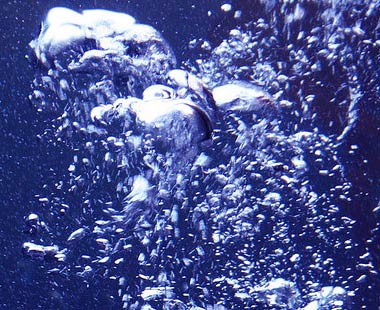While the nerd herd was busy declaring the threat posed by gigantic new plumes of methane from the Arctic Ocean to be a non-starter, we all managed to miss the real methane menace, highlighted by climate scientist Katharine Hayhoe: surprise. Surprise and fear. The two real methane menaces are fear and surprise.
The bottom line: Existing climate models appear to have significantly underestimated the future impact of methane from the world's vast stores of rapidly thawing permafrost. In fact, the real impact will be 2.5 times as large as previously estimated.
From a release on the new study, by ecologist Edward Schuur:
[M]odels created to estimate global warming may have underestimated the magnitude of carbon emissions from permafrost over the next century. Its effect on climate change is projected to be 2.5 times greater than models predicted, partly because of the amount of methane released in permafrost, or frozen soil.
The world's permafrost is like a meat locker for dirt — it halts the activity of bacteria in the soil by putting it into deep freeze. As it thaws out, anaerobic digestion starts back up again, releasing methane. And methane, just to jog your memory, is 20 times more powerful as a greenhouse gas than CO2 over a 100-year time span, and 72 times more powerful over 20 years — the period that some scientists argue is more relevant in terms of climate tipping points.
As a result of plant and animal remains decomposing for thousands of years, organic carbon in the permafrost zone is distributed across 11.7 million square miles of land, an amount that is more than three times larger than previously estimated. The new number is mainly based on evidence the carbon is stored much deeper as the result of observations, soil measurements, and experiments.
Two-and-a-half times more warming than previously predicted is just an average result, by the way. Schuur found that by the end of this century, the actual effect could be anywhere between 1.7 and 5.2 times worse than previously estimated.
“This new research shows that the unmanaged part of the biosphere has a major role in determining the future trajectory of climate change,” said Stanford University biology professor Christopher Field, who was not involved in the study. “The implication is sobering. Whatever target we set for atmospheric CO2, this new research means we will need to work harder to reach it. But of course, limiting the amount of climate change also decreases the climate damage from permafrost melting.”
In other words, the more we learn about climate change, the harsher its logic becomes.



